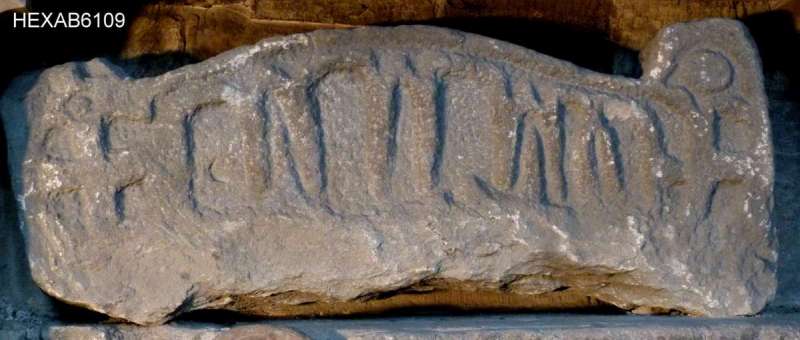1840: “An ancient sepulchral monument, apparently of the Anglo-Saxon era, was in 1831 discovered in digging for a grave in Hexham abbey church, where it is now preserved. This singular memorial is four feet three inches long, seven inches thick, and one foot eight inches in height; the sides and top are covered with rude crosses and arches in relief, and the ends rise up higher than the part between them, so as to accord in some measure with the description given of the monument over the grave of Acca, but this does not appear to have been inscribed. This monument was, I believe, first noticed in the Gentleman's Magazine, November, 1837, where engravings of it are also given. The vignette is from an original drawing.” [Fragmenta sepulchralia. A glimpse of the sepulchral and early monumental remains of Great Britain, by Matthew Holbeche Bloxam, p162, 2nd URL]
1865: “… in the north transept … To the Saxon era also may be referred a large sculptured stone, greater in height than width, which apparently has covered a grave. The bottom of it is unwrought, as if for fixture into the earth, but the sides and top, which has an elliptical sweep with a convex projection at each end, are covered with a very singular kind of rude ornamentation in relief …” [Raine, Preface II p.lxxxvii]
“It was found in 1831, when the grave of George Fenwick was dug in the north transept and has since been preserved in the church.” [Hodges 1888 p.50] Drawn by Hodges [HEXAB3043.8] |

 Hover on
Hover on